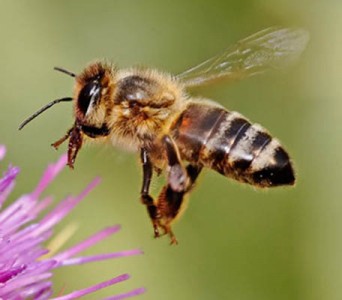 How many birds can you name (common names are fine)? 20? 50? 100? All 350 described in the Birds of Missouri? What about butterflies? There are 324 species of butterflies in Butterflies and Moths of Missouri, but of course that only scratches the surface of butterfly species and only names a few prominent moths. Now for the big question. As a wildflower grower you are certainly aware that bees are the primary pollinators. How many can you name? Honeybees – good. Bumblebees – whoops, not valid – there are 10 species of bumblebees in Missouri. Sweat bees? Nope there are many species of them also. Yellow Jackets? Not even bees; they are wasps.
How many birds can you name (common names are fine)? 20? 50? 100? All 350 described in the Birds of Missouri? What about butterflies? There are 324 species of butterflies in Butterflies and Moths of Missouri, but of course that only scratches the surface of butterfly species and only names a few prominent moths. Now for the big question. As a wildflower grower you are certainly aware that bees are the primary pollinators. How many can you name? Honeybees – good. Bumblebees – whoops, not valid – there are 10 species of bumblebees in Missouri. Sweat bees? Nope there are many species of them also. Yellow Jackets? Not even bees; they are wasps.
So why are bees such great pollinators? Bees do it for a living – to raise their families. Butterflies are just dabblers, snacking while going about their main business of finding a mate and laying eggs. Flies, wasps, bats, birds, and beetles are sometimes pollinators, but, again, they are just looking for a meal. The young of butterflies, moths, flies, and beetles feed on a tremendous variety of materials including plants, wood, other insects or animals. Bee larvae, however, feed on the pollen and nectar stored by their mothers. Consequently, bees visit more plants and, because they tend to be flower consistent, they are generally much more efficient as pollinators.
Honeybees are immigrant, being brought over from Europe primarily for their honey. This often works out well as many of our crops were also brought over from the Old World, but even that isn’t always a good fit. Alfalfa has a specialized flower that deposits the pollen on the bee. However, honeybees don’t like getting hit on the head when they land on the flower, consequently, they learn to bypass the pollination mechanism and “steal” the nectar. Native bees, such as leaf cutters or alkali bees are much more compliant and therefore fertilize far more flowers. Native bees have several advantages over honeybees. Have you ever visited your garden on a chilly morning and seen bumblebees already working? Native bees are active in cooler and wetter weather and are therefore available earlier and later in the day and in the season. In a comparison of honeybees and blue orchard bees in an apple orchard for a five day period, the blue orchard bees were active for 33+ hours versus 15+ hours for the honeybees. In addition, the native bees also made better contact with the anther and the stigma.
A number of species of native bees are “buzz pollinators”. These bees grab the flower and rapidly vibrate their flight muscles shaking the anther. This releases much more pollen and makes the process much more effective. According to Wikipedia, about 8% of the flowers worldwide are pollinated this way. It is important to a number of commercial crops such as tomatoes and blueberries.
Native bees differ in their degree of specialization. Some species specialize in one plant or a single family and only fly as adults when their food source is in bloom. On the other extreme, generalist will accept pollen and nectar from any source they can access, much like honeybees. Not only are native bees more effective both on the native plants with which they evolved, but they also exist as the plan B for the necessary pollination of the food crops on which we depend. Their continued prosperity – and in some cases, their continued existence – requires that we stop taking them for granted and actively support them. As native plant growers, we should be in the advance of that movement.
To be continued.

